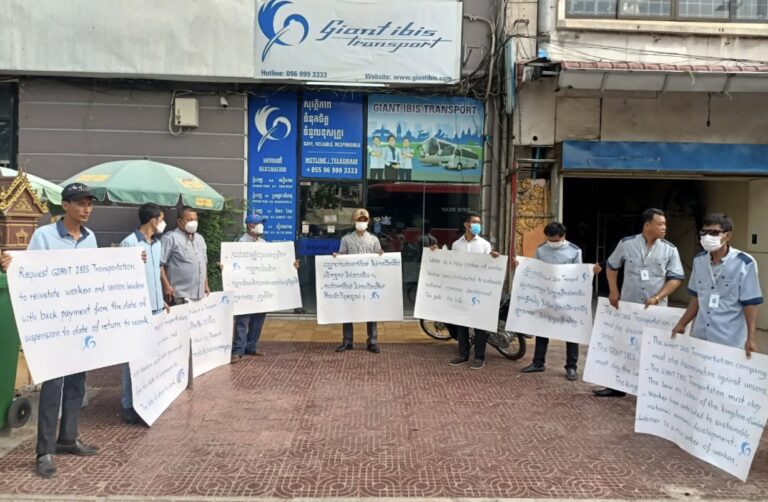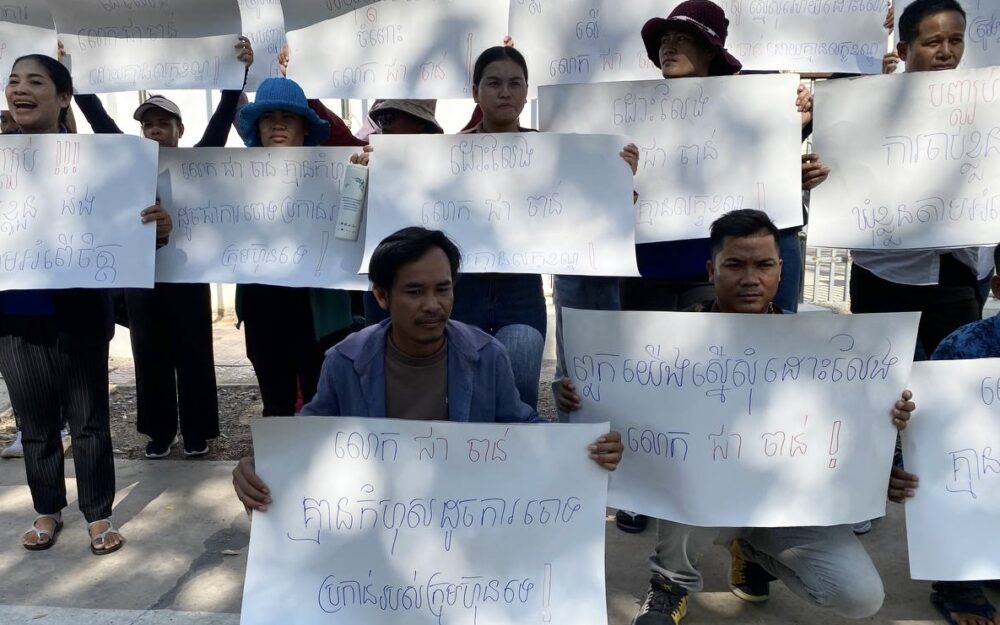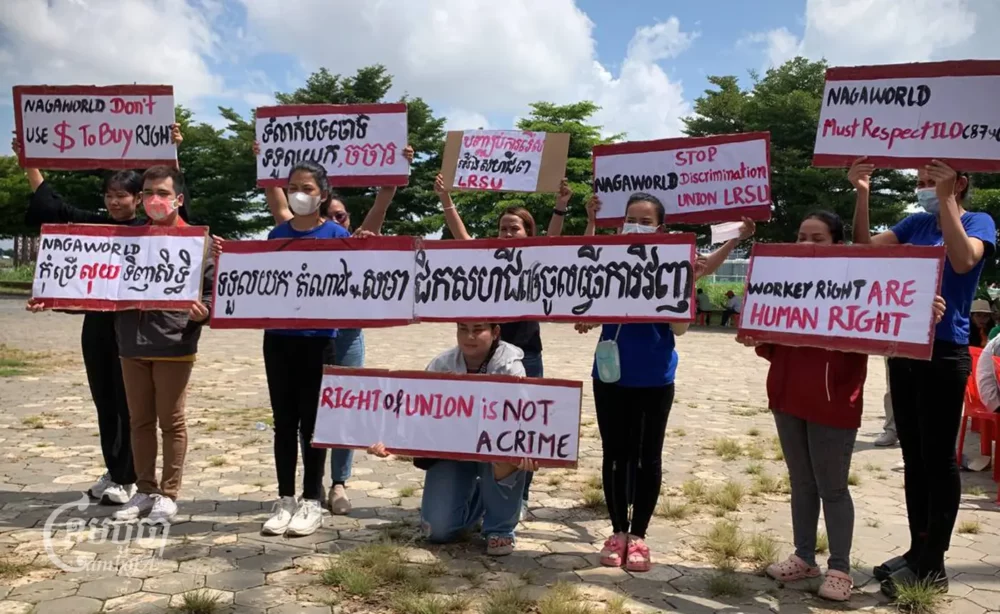Siem Reap Province-Before the pandemic, Tan Ang was able to make $100 in a weekend selling steamed palm cakes in Preah Dak village in Siem Reap. Now, her earnings are half of that, and for the Khmer New Year celebrations coming up this month, she has low expectations.
“There are tourists, but people seem to not spend money,” she said. “Maybe the hot weather makes people not want to eat, but it may also be because of the economic downturn.”
For the River Festival last month, she prepared a lot of cakes in advance thinking many tourists would attend, but she was left with many unpurchased cakes. For Khmer New Year, she doesn’t want to make the same mistake.
As Khmer New Year approaches, sellers in the tourist province of Siem Reap are expressing worries about the lack of visitors showing interest in purchasing their products. With the annual Angkor Sankranta celebration canceled this year, vendors are even more concerned.
The Union of Youth Federation of Cambodia, which began putting on the Angkor Sankranta event in 2013, announced on March 25 that it would not hold the larger celebration this year. Instead, residents and tourists can participate in smaller celebrations in provincial capitals as well as districts, communes and schools.
Ly Vannak, director of the Siem Reap provincial administration, told CamboJA News that the provincial administration was currently preparing the city for tourists during the smaller Siem Reap Sankranta, which will take place in some parts of the city. No decorations will be put up in the temple area as is tradition during the Angkor Sankranta.
“Angkor Sankranta takes a lot of time, preparation and human resources,” he said. “Angkor Sankranta will be reorganized in the next few years in order to have time for further planning.”
Vannak acknowledged that business owners have noticed a decrease in sales from tourists in Siem Reap.
“I would like to emphasize that because of the atmosphere of the global and regional economic crisis, it makes people’s spending tight, even if they are traveling,” he said.

But despite the canceled Angkor celebration, he is still optimistic about tourism this holiday, saying that nearly 80% of hotels in the area have bookings for Khmer New Year.
Chan Bopha, a sales manager at Blanc Smith Hotel in Siem Reap, told CamboJA News that around 70% of Siem Reap’s hotels and restaurants that closed at the beginning of the pandemic have since reopened. For this Khmer New Year, the hotel has had less bookings than last year.
Sam Srey Kong, a 26-year-old clothing vendor at the Chas Market, said tourism is still quiet compared to before COVID-19 and she does not expect to have many tourists buying her clothes during Khmer New Year. During the River Festival held in mid-March in Siem Reap, there were a lot of tourists, but only a few showed interest in purchasing her products.
“I want there to be Angkor Sankranta [again], because there were many customers,” she said. “After COVID, myself and others faced the economic downturn, so people just come to visit but do not want to spend money.”
Lek Vorn, the village chief of Preah Dak, said he hoped the village would be frequented by a lot of tourists visiting the culturally significant area this year. As some residents near the Angkor temple complex have been forced to move to the relocation site in Run Ta Ek, he said there are less food vendors for tourists now. But sellers need to be more savvy about what tourists actually want to buy, he said.
“They do not know how to attract customers. What they are selling is not attractive [to tourists],” he said.

Chhay Sivlin, president of the Cambodian Association of Travel Agents, said there is some truth to Vorn’s observation. She has started to see more American and European tourists visiting the area, customers who have higher spending power and expensive taste.
“Siem Reap in recent times is the market of American and European tourists. All of them are high-end consumers, so they need high-end services, accommodations, and good locations,” she said. “That’s outside of our normal market. When they are high-end tourists, they do not enter our local markets.”
Tourists started to return in 2021, she said, but the sector has not bounced back to pre-pandemic levels. She added that because of the recent economic downturn, most Cambodian tourists are spending less even when they do visit the area. If the situation doesn’t improve soon, she is concerned that many business owners will start leaving the tourism sector and may never return.
She thinks services and entertainment for tourists is an area that should be strengthened to attract more visitors to Siem Reap.
“In tourism we need a lot of different services for after visitors go to the temple, so aside from the existing cultural products [for sale], we need to have services to entertain tourists,” she said. “We only have one Angkor Wat, so tourists come, only take pictures and then go back.”
The government should also create a program that encourages tourists visiting neighboring countries to continue their travels in Cambodia, she said. In November, the government partnered with SME bank to offer a total of $50 million in loans to Siem Reap tourism businesses, with individual businesses able to take out $20,000 to $600,000 in financing.
But Hong Vannak, an economist at the Royal Academy of Cambodia, warned against Siem Reap businesses taking out these loans when tourism is still down.
“I think all sellers should not be in a hurry [to take out loans], because the current tourism situation is not the same as the tourism situation in 2018 or before COVID,” he said. “The important thing is to depend on the customers. The spending of the customers themselves is still limited, so if we increase the supply, it will lead to a crisis.”
In front of Angkor Wat earlier this month, a clothing vendor said she is only able to make about $10 a day, with very few people buying goods on the weekends.
“For this Khmer New Year, I have no hope.”















